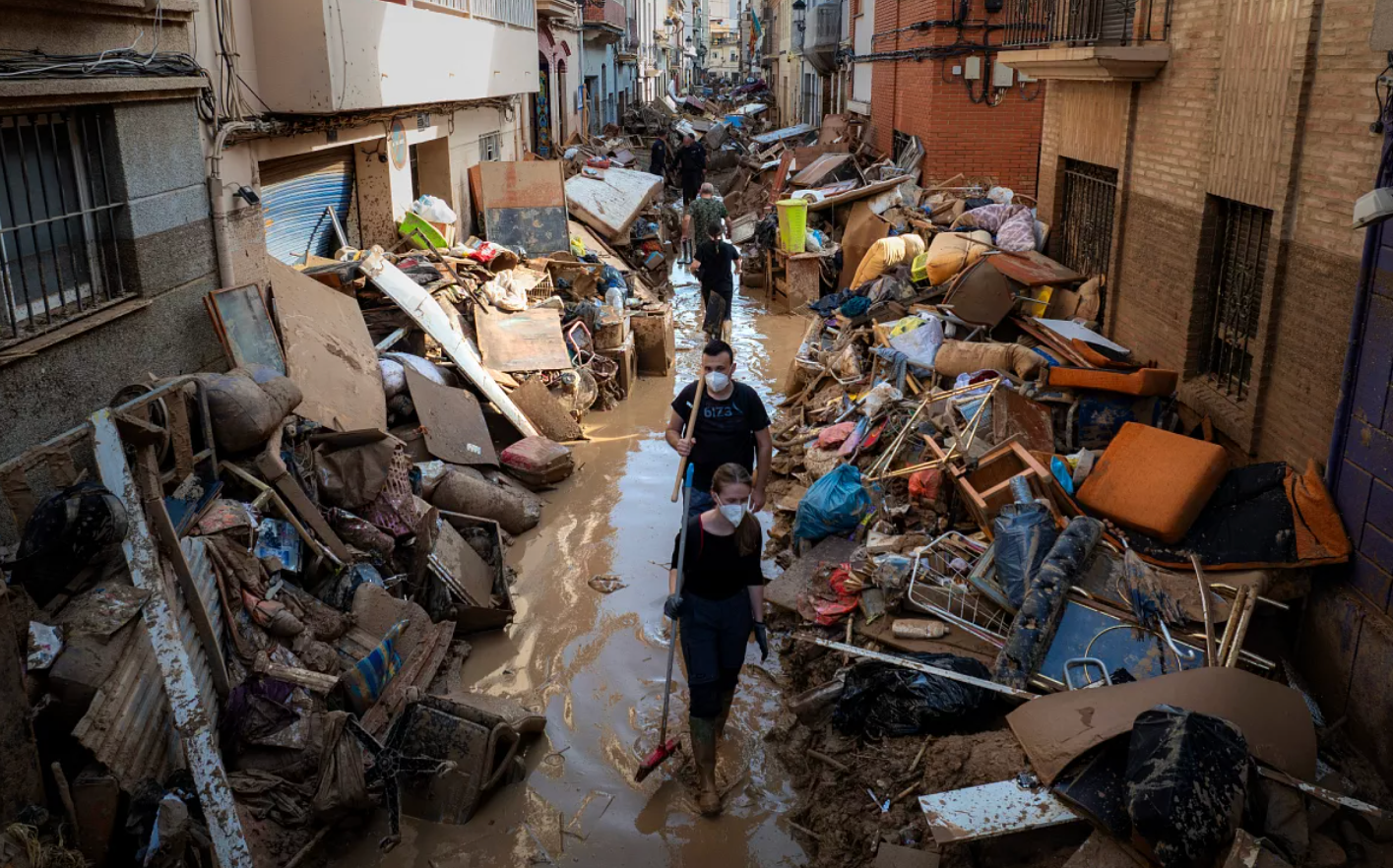
According to the European State of the Climate report by Copernicus and the World Meteorological Organization (WMO), 2024 was Europe's hottest year ever recorded, with nearly half of all days significantly warmer than historical averages — and 12% setting all-time heat records.
The climate emergency claimed at least 335 lives and impacted over 400,000 people across the continent last year. Extreme weather events caused more than €18 billion in damages.
"Think 1.3°C of warming is safe? This report lays bare the pain Europe's population is already suffering from extreme weather," said Dr Friederike Otto, senior lecturer at Imperial College London.
Heat, storms, and loss of ice
Southeastern Europe suffered its longest heatwave on record — 13 consecutive days in July — as summer temperatures pushed health systems and infrastructure to their limits. Southeastern regions experienced 66 days of "strong heat stress" and 23 tropical nights, making recovery from high daytime temperatures nearly impossible.
Meanwhile, all regions in Europe saw continued ice loss, with glaciers in Scandinavia and Svalbard recording their most dramatic mass losses to date.
Wildfires also raged through southern Europe. In Portugal alone, more than 110,000 hectares of land burned in just one week, accounting for a quarter of Europe's total annual fire area.
Deadly floods from Spain to Central Europe
In September, Storm Boris brought catastrophic flooding to parts of Germany, Poland, Hungary, and Romania, affecting hundreds of thousands. Just weeks later, extreme rainfall devastated Spain's Valencia region, where 232 people lost their lives and damages totaled €16.5 billion.
Flooding is Europe's most urgent climate risk, and the continent is expected to see some of the world's sharpest increases in flood-related disasters in the coming decades, the report warns.
‘We're heading for 3°C by 2100'
Europe is warming at twice the global average rate. If the current trajectory continues, the continent could see 30,000 annual deaths from extreme heat alone, according to IPCC projections.
"We're not on track for 1.5°C," said Dr Otto. "We're heading toward 3°C, and the floods in Spain, the fires in Portugal, and the heatwaves last summer show what that means for real people."
Can Europe adapt fast enough?
Some progress has been made. The number of European cities with dedicated climate adaptation plans has doubled since 2018 — from 26% to 51%. Initiatives include ‘tile-whipping' to expose soil in the Netherlands and the expansion of green spaces in cities like Paris.
Still, adaptation alone will not be enough, warns WMO Secretary-General Celeste Saulo: "We are making progress but need to go further, faster, and together."
The fossil fuel reckoning
As Europe endures rising costs, death tolls, and displacement from climate-driven disasters, scientists and campaigners are renewing calls to phase out fossil fuels.
"The suffering seen across Europe last year makes it even more urgent to leave fossil fuels behind as fast as possible," said Prof Stefan Rahmstorf of the Potsdam Institute for Climate Impact Research.
Encouragingly, the share of renewable energy in Europe's electricity mix has climbed to 45%, and the number of countries where renewables outperform fossil fuels has jumped from 12 to 20 since 2019.
But climate experts warn that progress is too slow. "Continuing to use fossil fuels in a world already destabilized by climate change is frankly insane," said Dr Otto. "The EU must stop bending to fossil fuel lobbies and lead with climate policies that protect people — not profits."